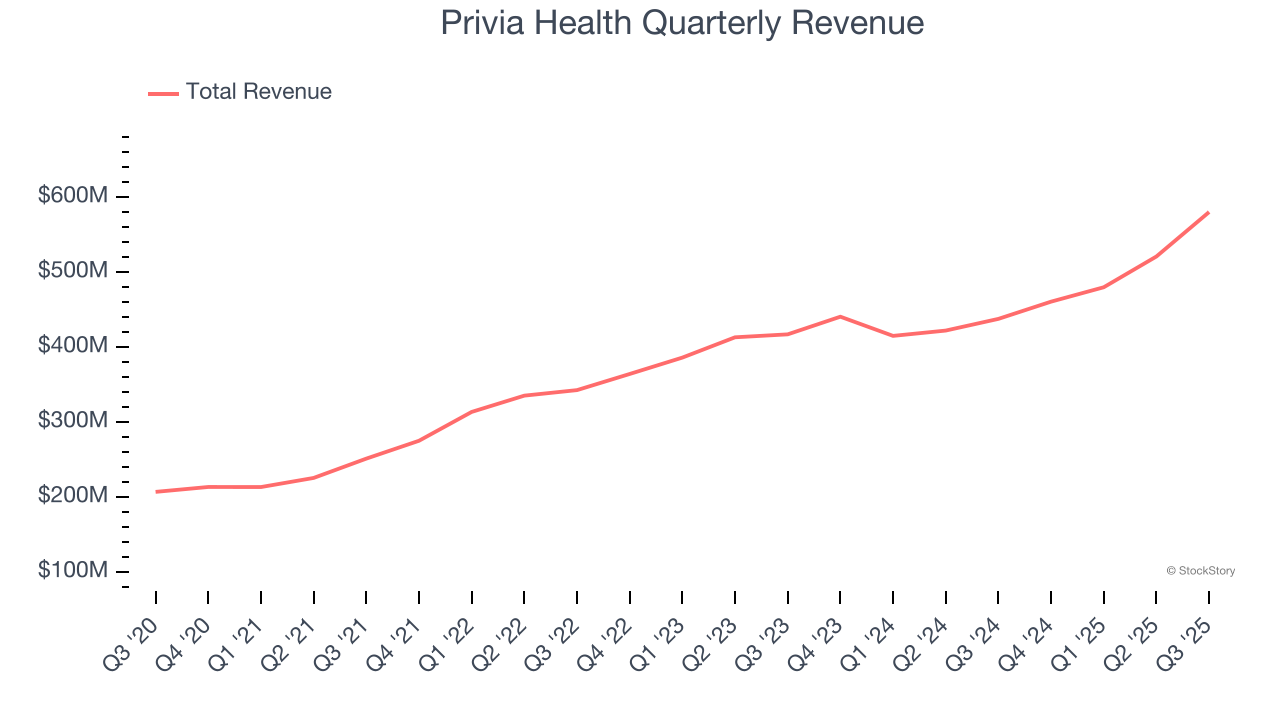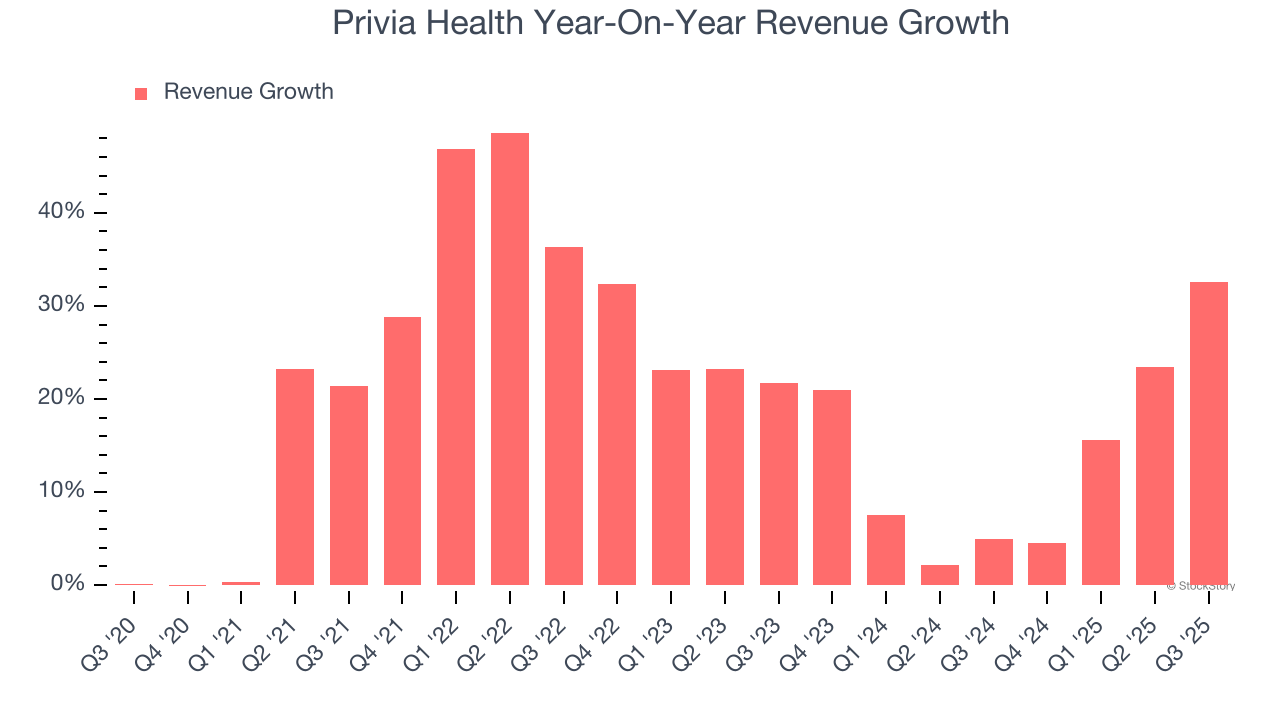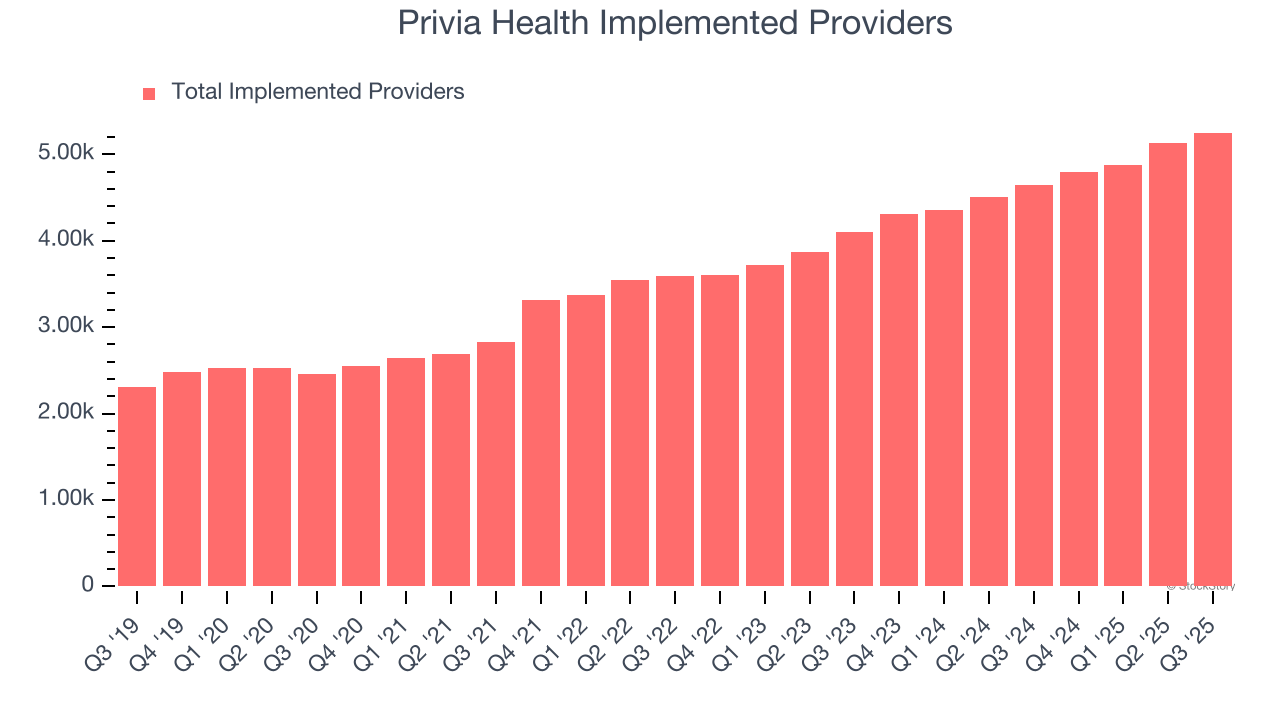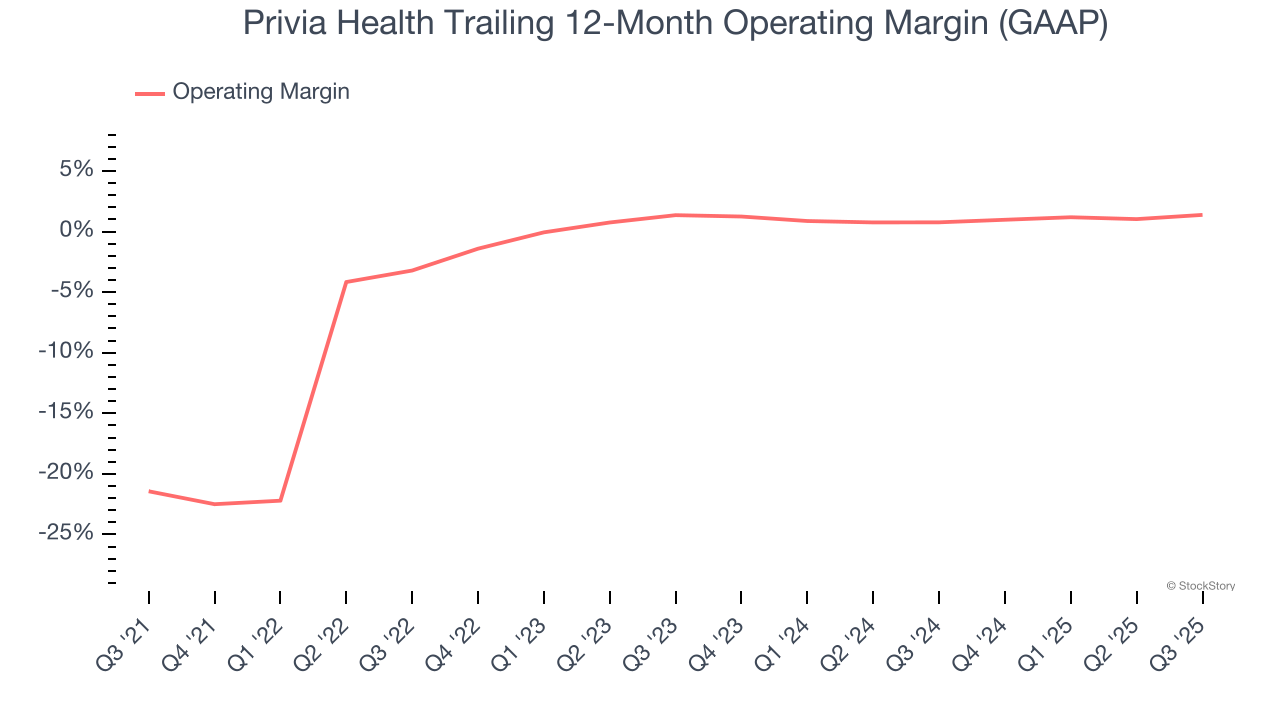
Healthcare tech company Privia Health Group (NASDAQ:PRVA) beat Wall Street’s revenue expectations in Q3 CY2025, with sales up 32.5% year on year to $580.4 million. The company’s full-year revenue guidance of $2.08 billion at the midpoint came in 3.6% above analysts’ estimates. Its non-GAAP profit of $0.29 per share was 33.7% above analysts’ consensus estimates.
Is now the time to buy Privia Health? Find out by accessing our full research report, it’s free for active Edge members.
Privia Health (PRVA) Q3 CY2025 Highlights:
- Revenue: $580.4 million vs analyst estimates of $497.7 million (32.5% year-on-year growth, 16.6% beat)
- Adjusted EPS: $0.29 vs analyst estimates of $0.22 (33.7% beat)
- Adjusted EBITDA: $38.19 million vs analyst estimates of $28.29 million (6.6% margin, 35% beat)
- The company lifted its revenue guidance for the full year to $2.08 billion at the midpoint from $1.9 billion, a 9.2% increase
- EBITDA guidance for the full year is $119.5 million at the midpoint, above analyst estimates of $113.8 million
- Operating Margin: 2.5%, up from 1.3% in the same quarter last year
- Free Cash Flow Margin: 9%, up from 7.6% in the same quarter last year
- Sales Volumes rose 13.1% year on year, in line with the same quarter last year
- Market Capitalization: $3.07 billion
Company Overview
Operating in 13 states and the District of Columbia with over 4,300 providers serving more than 4.8 million patients, Privia Health (NASDAQ:PRVA) is a technology-driven company that helps physicians optimize their practices, improve patient experiences, and transition to value-based care models.
Revenue Growth
A company’s long-term sales performance is one signal of its overall quality. Any business can put up a good quarter or two, but many enduring ones grow for years. Over the last five years, Privia Health grew its sales at an impressive 20.1% compounded annual growth rate. Its growth beat the average healthcare company and shows its offerings resonate with customers.

We at StockStory place the most emphasis on long-term growth, but within healthcare, a half-decade historical view may miss recent innovations or disruptive industry trends. Privia Health’s annualized revenue growth of 13.7% over the last two years is below its five-year trend, but we still think the results suggest healthy demand. 
We can dig further into the company’s revenue dynamics by analyzing its number of implemented providers, which reached 5,250 in the latest quarter. Over the last two years, Privia Health’s implemented providers averaged 14.5% year-on-year growth. Because this number is in line with its sales growth, we can see the company’s underlying demand was fairly consistent. 
This quarter, Privia Health reported wonderful year-on-year revenue growth of 32.5%, and its $580.4 million of revenue exceeded Wall Street’s estimates by 16.6%.
Looking ahead, sell-side analysts expect revenue to grow 4.3% over the next 12 months, a deceleration versus the last two years. This projection is underwhelming and suggests its products and services will face some demand challenges.
Software is eating the world and there is virtually no industry left that has been untouched by it. That drives increasing demand for tools helping software developers do their jobs, whether it be monitoring critical cloud infrastructure, integrating audio and video functionality, or ensuring smooth content streaming. Click here to access a free report on our 3 favorite stocks to play this generational megatrend.
Operating Margin
Operating margin is a key measure of profitability. Think of it as net income - the bottom line - excluding the impact of taxes and interest on debt, which are less connected to business fundamentals.
Although Privia Health was profitable this quarter from an operational perspective, it’s generally struggled over a longer time period. Its expensive cost structure has contributed to an average operating margin of negative 2.3% over the last five years. Unprofitable healthcare companies require extra attention because they could get caught swimming naked when the tide goes out. It’s hard to trust that the business can endure a full cycle.
On the plus side, Privia Health’s operating margin rose by 22.8 percentage points over the last five years, as its sales growth gave it operating leverage. Still, it will take much more for the company to show consistent profitability.

This quarter, Privia Health generated an operating margin profit margin of 2.5%, up 1.2 percentage points year on year. This increase was a welcome development and shows it was more efficient.
Earnings Per Share
Revenue trends explain a company’s historical growth, but the long-term change in earnings per share (EPS) points to the profitability of that growth – for example, a company could inflate its sales through excessive spending on advertising and promotions.
Privia Health’s EPS grew at an astounding 31.6% compounded annual growth rate over the last five years, higher than its 20.1% annualized revenue growth. This tells us the company became more profitable on a per-share basis as it expanded.

We can take a deeper look into Privia Health’s earnings to better understand the drivers of its performance. As we mentioned earlier, Privia Health’s operating margin expanded by 22.8 percentage points over the last five years. This was the most relevant factor (aside from the revenue impact) behind its higher earnings; interest expenses and taxes can also affect EPS but don’t tell us as much about a company’s fundamentals.
In Q3, Privia Health reported adjusted EPS of $0.29, up from $0.20 in the same quarter last year. This print easily cleared analysts’ estimates, and shareholders should be content with the results. Over the next 12 months, Wall Street expects Privia Health’s full-year EPS of $0.96 to stay about the same.
Key Takeaways from Privia Health’s Q3 Results
It was good to see Privia Health beat analysts’ EPS expectations this quarter. We were also excited its revenue outperformed Wall Street’s estimates by a wide margin. Zooming out, we think this was a solid print. The stock remained flat at $25.02 immediately following the results.
Is Privia Health an attractive investment opportunity right now? When making that decision, it’s important to consider its valuation, business qualities, as well as what has happened in the latest quarter. We cover that in our actionable full research report which you can read here, it’s free for active Edge members.
